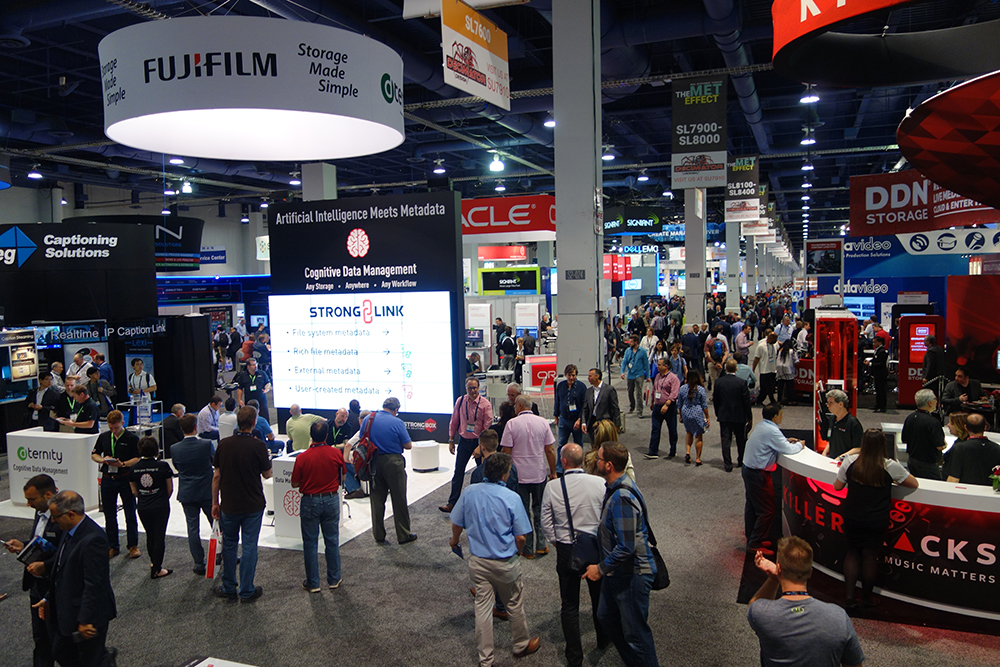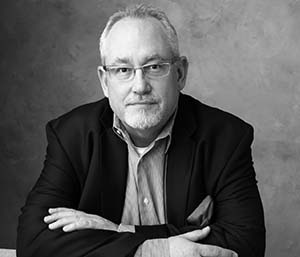

There are few better people to talk about these distinctions than Gary Adcock, partly because he has such a deep understanding of them, but also because they’re the reason he is set to lead and part of multiple NAB Show sessions. He has a unique knowledge of OnSet data, production technologies and their relationships to Post Production, but is also an established Executive Producer, Director and Cinematographer. His deep understanding of the creative and technical aspects of any project makes him one-of-a-kind, and his ability to utilize these skills separately or in tandem is as evident in his writings as it is in his CV.
Gary was gracious enough to connect with us to talk through some of what he has planned to showcase during his numerous NAB Show sessions. We also talked about whether or not creative professionals need to have a better understanding of the tools they utilize, how he’s seen topics from his sessions filter into the real world, what keeps him coming back to NAB every year and much more.
To learn more about or register for NAB Show taking place April 6-11 in Las Vegas, click here.
ProVideo Coalition: You’re an accomplished Writer, Producer & Artist, but also a Technologist. Apologies for not starting with a question, but it’s tough to understand how you can be so accomplished in both of these areas when creative and technical minds tend to be so distinct and separate!
Gary Adcock: Honestly, I think it has limited me at times. Many of my friends and clients don’t really understand me either.
Most people tend to focus on a couple of skills for work, often not expanding their interests or careers for the sake of a job. I seek the jobs that open new avenues and potential. Why be doing the same work over and over again, when you can seek knowledge from attempting something new?
I also look at technical and creative as two sides of the same issue, because being technical is not a mechanical process. There has to be cooperation and communication in being technical, just as it is needed when being creative. Sometimes you follow the rules, but when you don’t you still need to know the how and the why to deliver the best product, without regard to it being a technical or a creative task.
Should producers and artists make more of an effort to gain a better technical understanding of the tools and systems they need to use and configure? How do you approach issues during production that are the result of a producer or director not understanding a technical challenge?
I am pretty geeky, and I tend to hang with those same types of individuals, so my opinion on that subject is totally biased. But yes, I believe people should be more technical, if for no other reason other than it gives you more control.
I come from the “you need to know the rules to break them” school of thought. It allows me to have a better understanding of issues as they arise. Knowing what every person’s job function is allows you to better handle the trials and tribulations that come with production and post.
One of the biggest advantages I have onset is knowing when to pull the plug on an issue. That means making an informed decision on whether it will be cheaper to hold up 100 people onset for an hour to fix something or if it will be more cost effective to “fix it in post”. It’s maintaining that high level of knowledge in production after production that truly benefits the producers and directors I work with.
The tool I use the most onset is communication, along with being open to ideas and solutions that are not my own. I have had the honor of working with a number of Directors, Producer and DP’s that regularly sought me out in advance for ideas and problem-solving solutions. In contrast to that, I had an incident where the head of the camera department did not once talk to me during production but thought that physically accosting me for the FIZ controller on my DIT cart was the solution rather than discuss what he was doing and what was needed from me.
I imagine some of these elements will be touched on during your many NAB Show 2019 sessions, which will mark your 21st consecutive year speaking at NAB. What are some of the most notable things you’ve seen change over the years with the show, your sessions and even the NAB Show audience?
The one constant is always change. Cameras and other production equiptment constantly change. Editing and post is always changing. First it was Avid, then Premiere and then FinalCutPro. That changed to Premiere Pro and now it’s changed again with DaVinci Resolve taking a premium place as an editing as well as a finishing app.
It was all Standard Definition TV and Film when I started speaking at NAB. I have walked people through a wide range of topics and presented with some of the most influential people in the industry.
I have been lucky too. I was instrumental in the growth of Final Cut Pro, founding one of the 4 original FCP Users groups, yet I had already been speaking at NAB for 3 years when Final Cut launched. I have taken the lead in showing people what is coming and what’s on the horizon. I was discussing tapeless workflows years before the Fukushima earthquake forced tapeless on the entire industry. I was working on LUT’s and Log workflows before most people understood what the benefits were. My efforts on the ProRes codec, advancing cine-style cameras and production and how the DSLR would change our industry forever were also incredibly influential and indicative how how quickly and profoundly things change in this industry.
This year I am discussing wireless issues, hacking your productions, how to monetize innovations in AR and VR and what to expect with 8K on the horizon. This NAB is like every other one I have been to, because I know will be forced into rewriting my presentations late into the night, and even updating them from the show floor at times too.
Knowledge is power. I made a concerted effort to include people with ideas and tools that differ from my point of view. Both of the AR / VR sessions include discussions on diversity, especially on the business and development sides, because too many people are busting their butt’s to deliver great content without expecting to monetize their work.
The Modernist Cuisine session is all about “hacking” your production, or how to use all of the tools at your disposal to create better imagery. I’m just producing that session though, as MC’s Chief Creative Officer, Scott Heimendinger, will be the one presenting.
The “Maintaining Wireless” session goes in deep on the wireless spectrum that we work with in production, and how all of those devices technically cloud the ether around you and how something as simple as your car keys or Nest thermostat can affect your production. It’s becoming more and more of an issue as devices use more and more of the 2.4ghz and 5ghz areas of the wireless spectrum, just like your microwave.
You’ve written about RED’s Hydrogen One and mentioned that it’s something you support because it allows you to see into the future. What about that future are you planning to further explore during your NAB Show session, RED’s Hydrogen One – Just a Smartphone or a True Media Monster?
Yeah, with the last minute changes going on with the Hydrogen at the moment, I had to take a different tack with this session.
Phill Holland has graciously agreed to join me to talk about how not only Hydrogen, but Smartphones, in general, are changing every stage of production. I am planning on showing a couple of small projects I shot on Hydrogen and a couple of the non- RED apps I have switched to using on Android like Filmic Pro.
I really think that smartphones are the next step in reporting for local news stations and for Online content. While I will not be giving up larger cameras for most of my work, the smartphone revolution is happening whether we like it or not, just look what it did to DSLR’s.
Arguments were raging not too long ago about whether or not delivering at 4K was overkill, but you’ll be discussing What Delivering 8K or Full Frame Content Means for Your Production and Post at NAB Show. Is this session going to be more about the technical aspect of delivering at 8K or the creative need/opportunities that are enabled by doing so?
This is one of the future sessions, to get people to open up and understand that change is inevitable.
My co-presenters are people versed in the change. Blair Paulsen was one of the very first people to embrace the 4K RED workflows, and the other, Phillip Grossman is known as the “Chernobyl Guy” for his work documenting the issues and locations contaminated with high levels of radioactivity. Hopefully, people will be able to take away some of the same inspirations from these presenters that I have and be enthused by how they handle 8K in their differing workflows.
How have you seen the topics and trends that you discuss and work through with your fellow professionals in these sessions filter down and out to consumers?
I see the changes everywhere, nearly every day. While some of it is actually new, most of it has been tried before.
Take 360VR for instance: I was producing 360° content in QuickTimeVR for Taco Bell and Citibank in the 1990s. I helped carry a Phantom 65 camera around RED’s first booth at the IBC Show. I’ve been shooting in 4K long enough to see the concept go mainstream. Now, like millions of other people, I carry 4K recording capabilities in my pocket everywhere I go.
What better observation is there to make on how the technology filters down to consumers?
Is there something specific you’re looking forward to seeing or being part of at NAB Show 2019?
There will be a couple of new cameras, a number of new lenses, and this year I think the push will start in earnest on infrastructure stuff like IP Video Production. We all need to be thinking about how to free ourselves from the never-ending upgrade process when we change formats. 4K HDR is here now for everyone but the broadcasters, and the demand for 8K content is growing rapidly. That’s especially evident now that companies like Netflix are already specifying 8K deliverables for children’s programing in Japan.
Ultimately, what keeps you coming back to NAB Show year after year?
The people are why I am here. Period.
Being able to share knowledge, while ensconcing myself in absorbing even more information, is the reason I am around and the reason why I come back year after year. I get to connect with friend and colleagues from around the world, expanding my horizons and regenerating my spirit.
To learn more about or register for NAB Show taking place April 6-11 in Las Vegas, click here.
